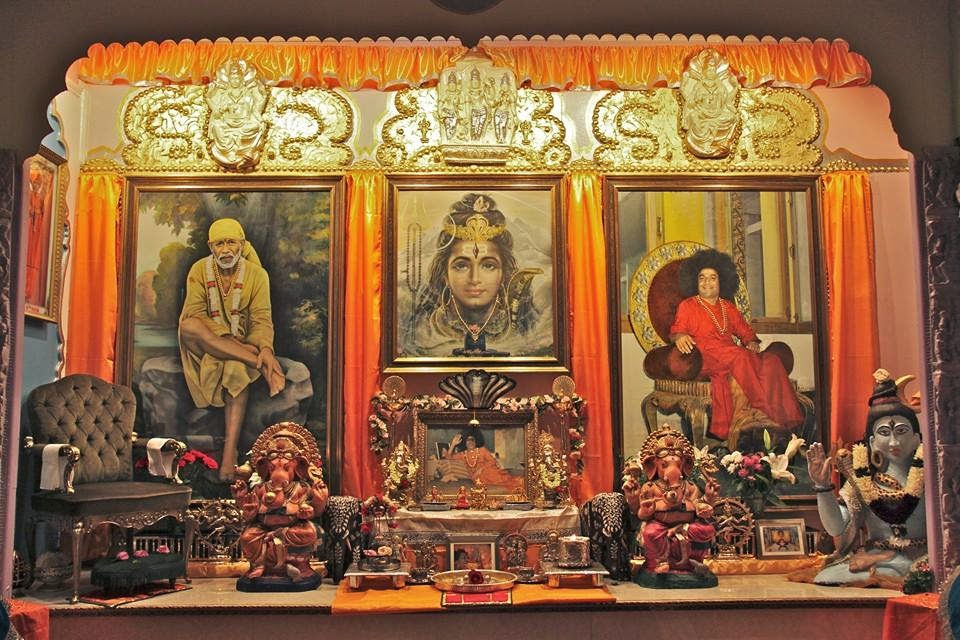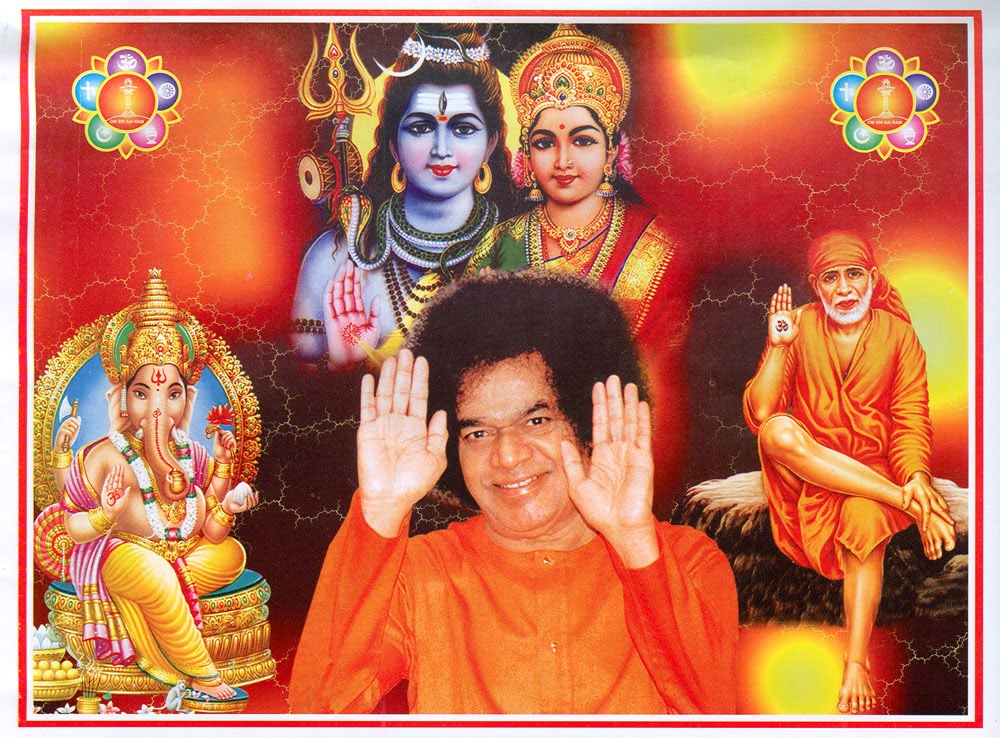Sathya Sai Baba: Una leyenda divina
Los principales factores en el desarrollo de los recursos humanos son la educación basada en valores y atención médica de calidad. Además, el requisito de infraestructura, como la disponibilidad de agua potable es una necesidad esencial del recurso humano. Mientras que el gobierno participa activamente en la prestación de estos recursos a los ciudadanos, Baba ha sido sensible a estas necesidades esenciales de la población indígena, en particular de las personas que viven en Andhra Pradesh y Karnataka, durante más de cuatro décadas.
Teniendo esto en cuenta, ha creado gran infraestructura para proporcionar una educación de calidad basada en valores a los niños de primaria hasta el nivel universitario, establecidos hospitales de especialidades súper en las zonas rurales - ya en 1991, cuando no había hospitales corporativos en estas regiones del interior - y trabajaron en un proyecto para dotar de agua potable potable para las personas del distrito de Anantapur de Andhra Pradesh. Me gustaría hablar de las características únicas de estas instituciones.
Value-Based Educación
La mejor parte de una persona joven es su infancia en la escuela y el mejor tiempo es 08 a.m.-4 p.m. cada día en la escuela. Esto es aplicable para todos los niños del grupo de edad de cinco a 20 que viven en las zonas urbanas y rurales.
Baba ha dado cuenta de los problemas de los pobres rurales y se ha convertido en un punto en que la educación es absolutamente libre en todas las escuelas y colegios establecidos por Fideicomiso Sathya Sai.
Curiosamente, las Instituciones Educativas Sathya Sai atender igualmente al desarrollo de la mente, el corazón y el cuerpo. Esto se logra a través de la educación integrada, que establece el mismo énfasis en mantener el cuerpo sano, la mente activa y fuerte y el corazón puro. Baba, siendo el canciller del instituto, pasa gran cantidad de tiempo con los estudiantes para prepararlos en ciudadanos ideales.
Sri Sathya Sai Baba dice, "Los estudiantes son el fundamento de la nación, la única riqueza que atesoro estudiantes son mi todo;... Toda mi propiedad consta de los estudiantes que han ofrecido a mí mismo a ellos" También dice: "El fin de la educación es el carácter y el fin del conocimiento es el amor." Esta es la razón por la Instituto Sri Sathya Sai de educación superior destaca la formación del carácter como un componente importante de la educación además de la adquisición de la excelencia académica.
La nobleza de carácter que sale de la humildad, la generosidad, la compasión, la amabilidad y el respeto a los valores morales. El hilo único que corre a través de todas las actividades del instituto, curriculares, co-curriculares y extra-curriculares es que la educación es para la vida y no para la mera vida. La experiencia ha demostrado que las organizaciones y empresas líderes en el país absorben estudiantes Sai. Se afirma que los estudiantes lo reclutaron lograr un cambio tranquilo en la ética de trabajo e inyectar el espíritu de equipo, así como un enfoque basado en el valor de todos los aspectos de la actividad de la organización.
Misión Agua
En 1994, Baba hizo una referencia que se mueve a las dificultades experimentadas por la gente de la región Rayalaseema en conseguir agua potable y sugirió que el siglo-viejo problema requiere atención urgente. En 1995, se agregó una nueva dimensión a su misión social por la confianza, la realización de trabajos para proveer de agua buena y segura para beber a tantas personas del distrito de Anantapur como sea posible en el menor tiempo posible, independientemente de las dificultades y el costo.
Al tocar el agua subterránea se consideró como una opción, pero se descartó debido al problema de fluoruro. Se decidió utilizar el agua de lluvia mediante la elaboración de agua durante el monzón y el almacenamiento en depósitos especiales.
La mayoría de las fuentes de agua se encontraban en la parte norte del distrito de Anantapur y el terreno al sur inclinadas hacia arriba. Por lo tanto, llevar agua a la región sur necesaria la creación de un gran número de estaciones de bombeo para bombear el agua contra la gravedad. Este pidió extensa obra civil e ingeniería. A pesar de todas las dificultades, el agua se puso a disposición del distrito de Anantapur en 18 meses. Después de un año de funcionamiento regular, la totalidad de las obras de agua fue entregado a la gente del estado como un regalo. El plan abarca 750 aldeas y proporciona agua a más de un millón de personas.
India necesita un millar de esas organizaciones para proporcionar rentable agua potable a los mil millones de personas repartidas en diferentes partes del país.
Salud
Durante la década de 1980, un número considerable de súper especialidad hospitales corporativos llegó a existir en nuestras áreas urbanas. Sin embargo, debido a la comercialización, podrían atender sólo a las necesidades de los ricos urbanos. Hubo amplia brecha en la disponibilidad de Medicare para los ricos y pobres y entre la población rural y urbana. Teniendo esto en cuenta, Baba declaró el 23 de noviembre de 1990, habría un hospital de clase mundial en el área de Puttaparthi dentro de un año y sería ofrecer tratamiento gratuito a todos los que vienen allí, especialmente los pobres.
Este hospital fue inaugurado el 22 de noviembre de 1991. Después de su inauguración, el hospital súper especialidad ha llevado a cabo muchas de las principales operaciones de corazón y los procedimientos de cateterización. Cirujanos especialistas de hospitales de renombre, tanto de la India como en el extranjero, voluntariamente tomar licencia de su trabajo regular y llegar a Puttaparthi y realizar operaciones de forma gratuita. Igual es el caso de los servicios de enfermería.
Entiendo los pacientes convalecientes proporcionan voluntariado a los nuevos pacientes que acuden a los hospitales para la operación. También las instalaciones del hospital se mantienen en un ambiente limpio, tranquilo, sereno y divino. Podemos ver el poder de la conciencia del servicio que fluye en todo el entorno del hospital.
Gestión De Proyectos
Ya se trate de un hospital súper especialidad en Puttaparthi o provisión de agua potable a Anantapur o provisión de agua potable a Chennai por la solución de los problemas relacionados con el depósito Kandaleru, todos los proyectos se han completado para alcanzar el objetivo especificado en el plazo establecido y el costo.¿Cómo esto ha sido posible? Yo estaba pensando en eso. La razón principal parece ser que los proyectos han sido confiados a los administradores de proyectos socialmente comprometida, contratistas y subcontratistas. Han ejecutado el proyecto con un espíritu de cooperación, el espíritu de sacrificio y dedicación. Los jefes de programas han seguido los valores humanos de cinco centrales - de verdad, conducta correcta, la no violencia, el amor y la paz -mientras la ejecución de los proyectos.¿Puede haber un mejor modelo a seguir que esto para la promoción de una desinteresada en todo el país, la misión de la transformación social?
TRADUCIDO EN INTERNET
Sathya Sai Baba : A divine legend
I admire Bhagwan Satya Sai Baba for his selfless work and contributions to the welfare of the people by providing drinking water for the rural population, free healthcare facilities for the rural poor and free higher education.
The major factors in human resource development are value based education and quality healthcare. In addition, the infrastructural requirement like availability of potable water is an essential need of the human resource. While the government is actively engaged in providing these resources to the citizens, Baba has been sensitive to these essential needs of the Indian population, particularly of the people living in Andhra Pradesh and Karnataka, for over four decades.
Keeping this in mind, he has created vast infrastructure for providing value-based quality education to children from primary to university level, established super specialty hospitals in rural areas - as early as 1991 when there were no corporate hospitals in such interior regions - and worked on a project to provide potable safe drinking water for people of Anantapur district of Andhra Pradesh. I would like to discuss the unique characteristics of these institutions.
Value-Based Education
The best part of a young person is his or her childhood in school and the best time spent is 8am to 4 pm each day in the school. This is applicable for all children in the age group of five to 20 living in both urban and rural areas.
Baba has realised the problems of the rural poor and has made it a point that education is absolutely free in all the schools and colleges established by the Sathya Sai Trust.
Interestingly, the Sathya Sai Educational Institutions cater equally to the development of the mind, heart and the body. This is achieved through integrated education, which lays equal emphasis on keeping the body healthy, the mind active and sharp and the heart pure. Baba, being the Chancellor of the institute, spends substantial amount of time with the students to groom them into ideal citizens.
Sri Sathya Sai Baba says, "Students are the foundation of the nation, the only wealth that I cherish. Students are my all; my entire property consists of students. I have offered myself to them." He also says, "The end of education is character and the end of knowledge is love." This is the reason why Sri Sathya Sai Institute of higher learning emphasises character building as an important component of education apart from acquiring academic excellence.
Nobility in character comes out of humility, generosity, compassion, helpfulness and respect for moral values. The single thread that runs through all the activities of the institute, curricular, co-curricular and extra-curricular is that education is for life and not for mere living. Experience has shown that leading organisations and companies in the country absorb Sai students. It is claimed that the students so recruited bring about a quiet change in work ethics and inject team spirit as well as a value-based approach to all aspects of organisational activity.
Water Mission
In 1994, Baba made a moving reference to the difficulties experienced by the people of Rayalaseema region in getting safe drinking water and suggested that the century-old problem needed urgent attention. In 1995, he added a new dimension to his societal mission by the trust, undertaking work to provide good and safe drinking water to as many people of Anantapur district as possible in the shortest possible time, irrespective of the difficulties experienced and the cost.
Tapping ground water was considered as an option, but was ruled out because of the fluoride problem. It was decided to use rainwater by drawing water during the monsoon and storing in special reservoirs.
Most of the water sources were in the northern part of Anantapur district and the terrain to the south sloped upwards. Hence, bringing water to the southern region needed creation of large number of pumping stations to pump water against gravity. This called for extensive civil and engineering work. In spite of all the difficulties, the water was made available to Anantapur district in 18 months. After a year of regular operation, the entire water works was handed over to the people of the state as a gift. The scheme covers 750 villages and provides water to over one million people.
India needs a thousand such organisations to provide cost effective potable drinking water to the billion people spread in different parts of the country.
Healthcare
During the 1980s, a substantial number of super specialty corporate hospitals came into being in our urban areas. However, due to commercialisation, they could cater only to the needs of urban rich people. There was wide gap in the availability of medicare for the rich and poor and between rural and urban population. Keeping this in mind, Baba declared on November 23, 1990, there would be a world-class hospital in Puttaparthi area within a year and it would offer free treatment to everyone who come there, especially the poor.
This hospital was inaugurated on November 22, 1991. After its inauguration, the super specialty hospital has conducted many major heart surgeries and catheterisation procedures. Specialist surgeons from reputed hospitals, both from India and abroad, voluntarily take leave from their regular work and come to Puttaparthi and perform operations free of cost. Same is the case with nursing services.
I understand the convalescing patients provide voluntary help to the new patients who come to the hospitals for operation. Also the hospital premises are maintained in a clean, calm, serene and divine atmosphere. We can see the power of service consciousness flowing in the entire hospital environment.
Project Management
Whether it be a super specialty hospital at Puttaparthi or provision of safe drinking water for Anantapur or provision of drinking water to Chennai by solving the problems associated with Kandaleru reservoir, all projects have been completed to meet the specified objective within the prescribed time and cost. How this has been possible? I was thinking about it. The major reason appears to be that the projects have been entrusted to socially committed project managers, contractors and sub-contractors. They have executed the project with a spirit of co-operation, the spirit of sacrifice and dedication. The programme chiefs have followed the five core human values - truth, right conduct, non-violence, love and peace -while executing the projects. Can there be a better role model than this for promoting a nationwide selfless, societal transformation mission?
FUENTE: http://www.hindustantimes.com/columnsothers/sathya-sai-baba-a-divine-legend/article1-688409.aspx























No hay comentarios :
Publicar un comentario